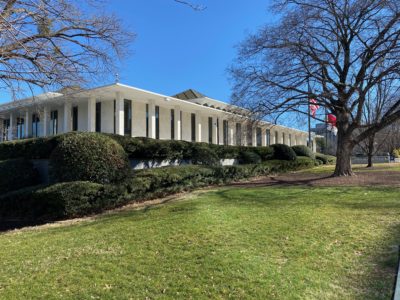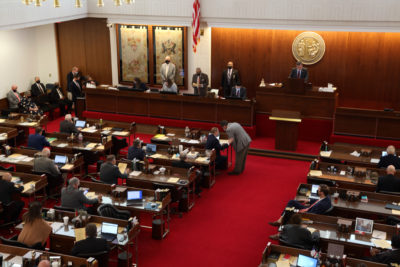
|
|
Hours after a press conference in which Senate leaders teased highlights of their impending two-year spending plan, the chamber released their actual budget document. It includes 3% pay raises for teachers, in addition to bonuses, and money for school psychologists. It also allocates federal COVID-19 relief funds.
The total general fund budget proposed by the Senate includes about $25.7 billion in 2021-22 and about $26.6 billion in 2022-23. Of that, K-12 education makes up about $10.4 billion in the first year and $10.5 billion in the second year.
See the budget bill here. See the money report here.
Sign up for the EdDaily to start each weekday with the top education news.
Salary increases
Those expecting large teacher pay increases were disappointed when the budget details were unveiled yesterday. Because no biennium budget was enacted in 2019, teachers have gone two years without a salary increase. The budget proposed Monday includes just a 1.5% salary increase for teachers in each year of the biennium for a total of 3%. That is an average pay increase and includes step increases for teachers who would have gotten them anyway.
That is not all that teachers will be getting, however. State employees making less than $75,000 will get a $1,500 bonus and those making more will get $1,000 bonuses. All of that money comes from federal relief funds, and it includes teachers.
In addition, teachers will get a $300 bonus “from repurposed state funds previously appropriated for performance bonuses that cannot be paid due to COVID-19 related data issues,” according to a press release.
Senate President Pro Tem Phil Berger, R-Rockingham, was asked at a press conference Monday why the teacher pay raises were relatively small. He said that teacher pay rankings nationally are much better than they were when Republicans took control of the General Assembly in 2011, and thus the large percent increases seen in previous years aren’t necessary currently. In addition, he said the Senate was trying to keep to agreed-upon spending caps with the House.
That agreement capped spending in the first year of the biennium (2021-22) at $25.7 billion and the second year at $26.7 billion. According to a previous press release, those spending amounts represent a 3.45% and 3.65% spending increase, respectively.
Shortly after the press conference with Senate leaders yesterday, the North Carolina Association of Educators (NCAE) sent out a press release criticizing the Senate pay proposal.
“When presented with an added $6.5 billion in unexpected revenue, the N.C. Senate has opted to reward North Carolina educators for working non-stop to support our students through the most difficult school year in history with a pitiful 1.5 percent annual pay raise,” said NCAE President Tamika Walker Kelly in an emailed statement. “This proposed budget shows that corporate tax cuts take priority over North Carolina students yet again.”
Here are the proposed teacher salary schedules for the next two years.

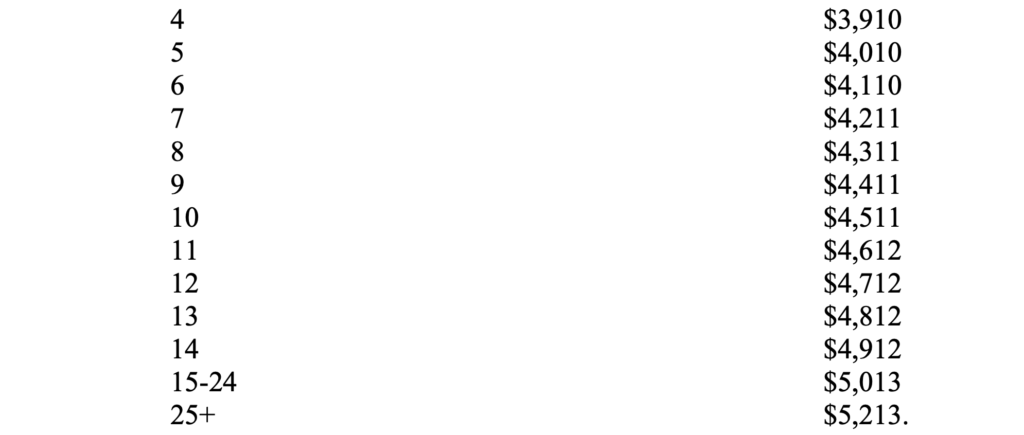
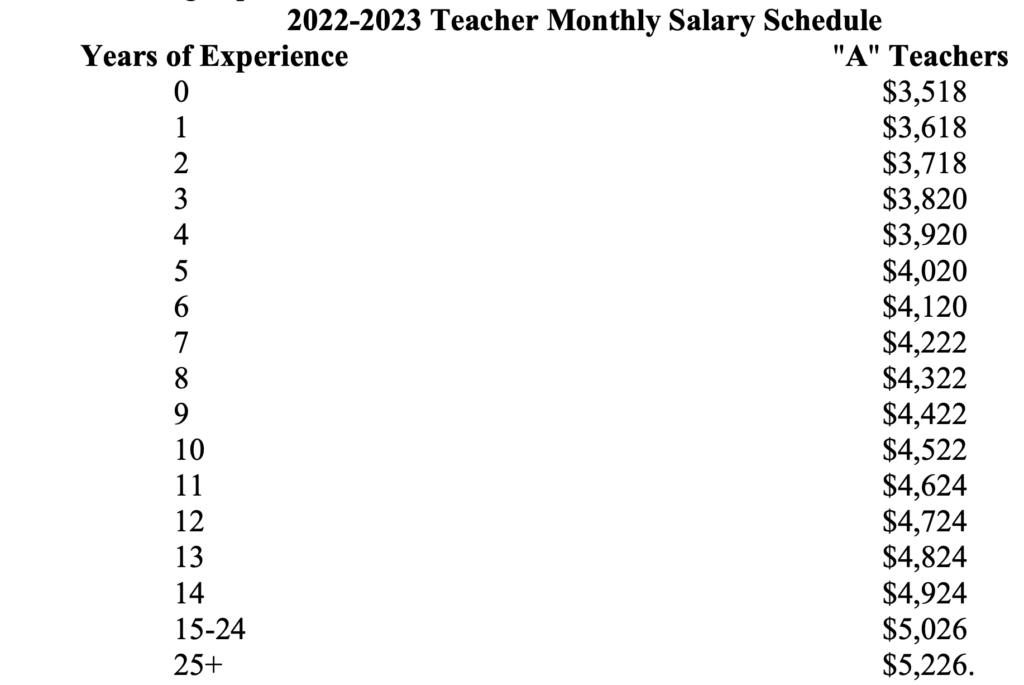
The Senate proposal includes a tax cut plan already passed by the Senate this session. Read more about that here.
Principals will see a 3% pay raise over the biennium under the Senate’s pay proposal. They will also get the bonuses for state employees, as well as an additional $1,800 using state funds that would have been used for performance bonuses had COVID-19 not happened.
Here is the proposed principal salary schedule for the next two years.


As you can see from the salary schedules, part of principal salaries are calculated based on whether students meet or exceed growth at the school. Because of COVID-19, that isn’t possible, so the budget has a provision that basically says growth scores for the purposes of salary will be calculated using the three most recent years for which growth scores are available.

The Senate’s proposal stands in stark contrast to Gov. Roy Cooper’s proposed budget, which included a roughly 10% average pay increase for teachers and principals over two years and a $2,000 bonus for them and all public school personnel.
The Senate budget also includes funding to ensure that non-certified school employees, such as bus drivers and cafeteria workers, get a minimum wage of $13 an hour. The governor’s budget provided enough funding to ensure a $15 an hour minimum wage for these workers, which would be in line with what the state already ensures for most state employees.
Capital needs
The Senate proposal puts money into the State Capital and Infrastructure Fund (SCIF) with the aim of building it up over 10 years such that $12 billion will be available for infrastructure projects around the state.
Specifically for education construction, the budget plan would transfer a little over $450 million over two years from the state lottery to the Needs-Based Public School Capital Building Fund. Another $200 million would go from the lottery to the Public School Capital Fund. According to a press release on the budget, “Over the course of the next 7 years, a projected $2.4 billion will be spent on school capital.”
Cooper proposed tackling the state’s infrastructure needs by putting a $4.7 billion bond on the ballot in November 2021. If passed by voters, that bond would have paid for $2.5 billion in public school construction needs and $500 million for the community college system. The public school system had more than $8 billion in infrastructure needs as of a few years ago, though that number is likely higher now.
School psychologists
The Senate proposal includes $40.9 million in both years of the biennium to ensure that every school district in the state has a school psychologist. This school psychologist funding was also in the budget proposed by the General Assembly and vetoed by Cooper in 2019.
Cooper’s plan for the next two years included $40 million in the first year and $80 million in the second year for all “instructional support personnel,” which includes positions such as nurses, school counselors, social workers, and psychologists.
Broadband
During COVID-19, it became increasingly clear that high-speed broadband internet had taken on the quality of a utility in North Carolina and around the world. The pandemic also highlighted vast disparities in the state when it comes to who has access to broadband. In an attempt to shrink the disparity, the Senate proposal includes both state and federal funds to tackle the issue.
The Senate budget includes $30 million over the biennium for the Growing Rural Economies with Access to Technology (GREAT) Program, which seeks to expand rural broadband, and it also allocates $700 million in federal funds to expand rural broadband.
In his plan for spending federal COVID-19 relief funding, Cooper proposed spending $1.2 billion on broadband, including $600 million for infrastructure.
State reserve spending of federal education funds
The state budget also allocates a portion of the $3.6 billion sent directly to North Carolina school districts for COVID-19 relief. Under federal guidance, the state is able to hold back a 10% reserve of that funding, and the Senate plan spends what’s left of that 10%.
The House already passed its proposal on how that money should be spent in a repurposed Senate bill, which has gone to a conference committee to resolve the differences between the two chambers.
The Senate plan includes the following line items, which are identical to what the House proposed:
- $20 million to make sure every “public school unit” — districts, charter schools, lab schools, etc. — gets $400 per pupil in federal money.
- $36 million for grants to public school units for COVID-19-related needs, including for programs designed “to address learning loss and provide enrichment activities, such as for after-school and before-school programs, during the instructional year.”
- $36 million for grants to public school units for COVID-19 related needs, “including for in-person instruction summer programs to address learning loss and provide enrichment activities.”
- $15 million for a grant program to contract with school health support services for public school units. Also another $2 million to “identify and locate missing public school students.” The House combined these provisions in their proposal, but the overall dollar amount is the same.
- $10 million “to support a common learning management system to be utilized for in-person and remote instruction for kindergarten through fifth grade for a period of up to three years. Funds may also be used for the kindergarten readiness programs based on the Science of Reading.”
- $37.5 million for teacher and principal professional development in the science of reading.
The Senate plan also includes the following line items, which are different from the House proposal.
- $10 million “for in-person, evidence-based tutoring initiatives.”
- $15 million for grants to low-performing schools.
The reserve money that both the House and Senate have allocated could have been allocated by the State Board of Education and the state Department of Public Instruction (DPI). In fact, the State Board and DPI did so with previous federal COVID-19 relief funds.
You can see all the line items for this section starting on page 54 of the budget bill.
Leandro
In response to a question about how the Senate budget aligns with the comprehensive remedial plan in the long-running Leandro case, General Assembly staff put together the following document for members of the Senate appropriations committee. It shows what in the Senate budget is also in the Leandro comprehensive plan. (Editor’s Note: An updated version of the document was sent to the appropriations committee on June 23rd. It is below.)
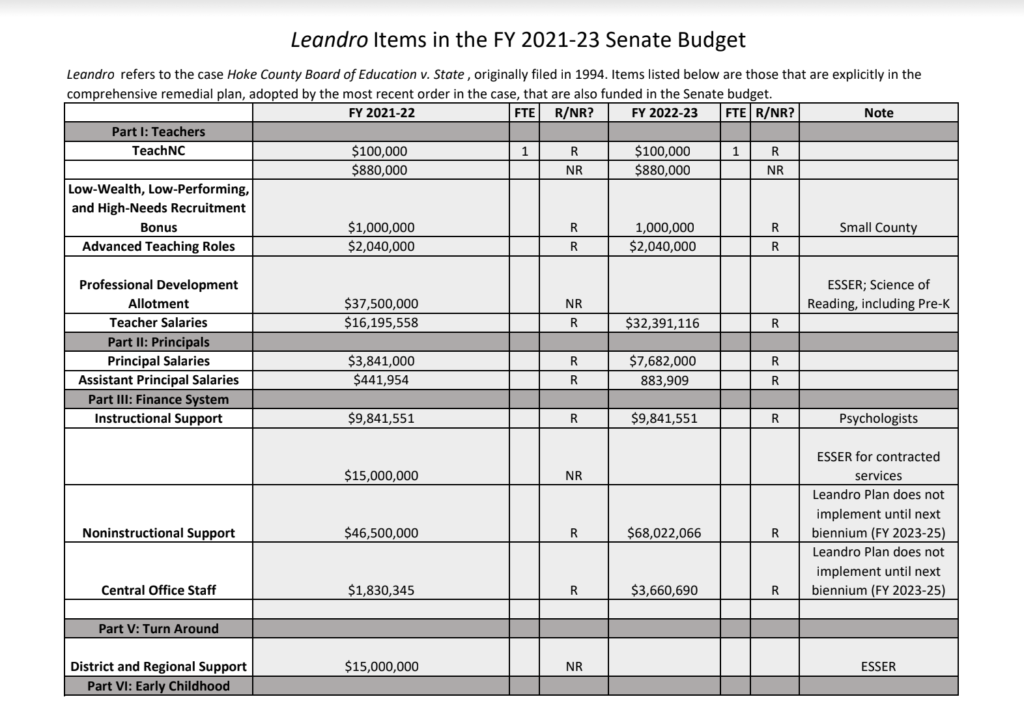
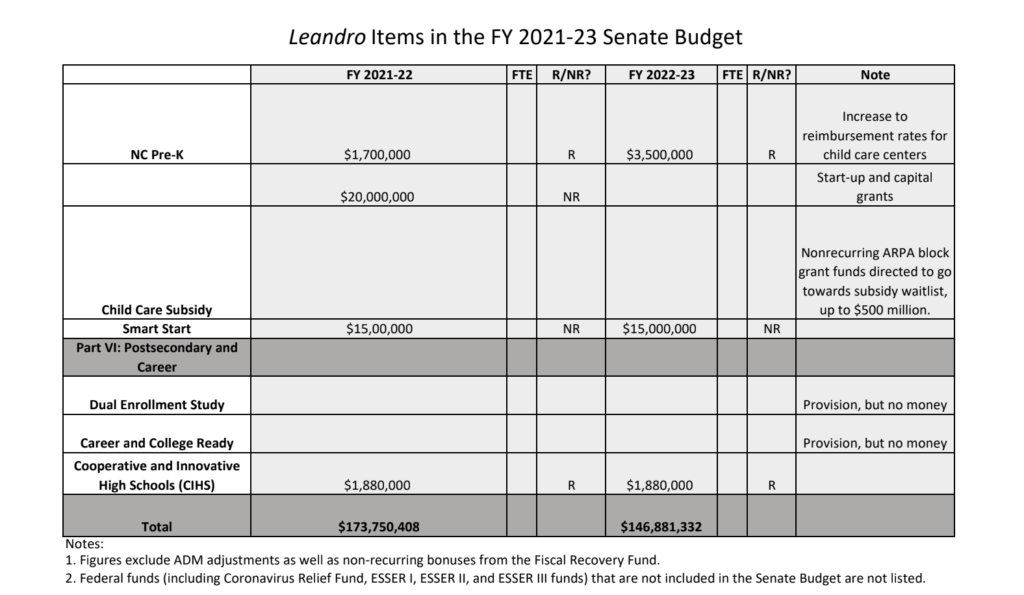
The Supreme Court of North Carolina, in its landmark Leandro v. State of North Carolina decision, affirmed the fundamental right of every child to have access to a sound, basic education. The courts also ruled that North Carolina was not meeting this constitutional requirement. The courts and parties have been trying to figure out how to make this right ever since — the comprehensive remedial plan is the most ambitious attempt made yet to do so.
Judge David Lee signed an order recently to implement the comprehensive eight-year plan. That order references a House Democrat bill, as well as the governor’s budget, both of which take efforts to implement the first two years of the comprehensive plan. The House bill is stuck in the rules committee and not likely to be heard.
Child care and early education
The Senate budget provides additional funding for Smart Start in three different buckets:
- Child Care Related Activities: $10 million in additional funds nonrecurring in both years of the biennium.
- Family Support Activities: $4 million in additional funds nonrecurring in both years of the biennium.
- Health Related Activities: $1 million in additional funds nonrecurring in both years of the biennium.
Additionally, the budget will give funding to increase NC Pre-K rates for child care centers 2% in both years of the biennium.
Hold harmless, Innovative School District, and Opportunity Scholarship Program
Due to COVID-19, there has been a great deal of concern from school districts that they might see funding drops as a result of declines in enrollment. The Senate budget proposal includes $22.2 million in nonrecurring funds to hold districts harmless for the 2021-22 school year so that they don’t see a drop in state funding.
The budget would end the Innovative School District. This controversial project was created in 2016 and was intended ultimately to incorporate up to 5 schools within a “district” of low-performing schools from around the state that for-profit or non-profit charter management organizations could take over and turn around. The program went through many changes since its advent, but it never managed to get more than one school into the district and that school faced tremendous challenges.
According to the budget plan, the Innovative School District will continue to operate the sole school — Southside-Ashpole Elementary School — until 2023-24 when it will be returned to the Robeson County School District.
The budget includes $76.8 million in new funding for the controversial Opportunity Scholarship Program, which gives state funds to students to be used for private school. It also mirrors language in a Senate bill that would increase the income eligibility amount from about 150% of the income required to qualify for free-and-reduced-price lunch to 175%.
It would also increase the amount of money opportunity scholarship recipients get to up to 90% of state per-pupil funding. The current average state per-pupil allocation is $6,586, according to DPI staff. That means students using opportunity scholarships could get a little over $5,900 per year.
The governor would have eliminated future funding for the Opportunity Scholarship Program under his budget proposal.
Other items of note
The budget would provide $10 million in nonrecurring funds in both years of the biennium to “[provide] funds for competitive grants to support students in crisis, school safety training, and safety equipment in schools.”
The budget includes $6 million nonrecurring in both years of the biennium to implement the recent revision to the Excellent Public Schools Act, including for the science of reading.
The budget has about $2 million nonrecurring in both years of the biennium to expand the Advanced Teaching Roles program.
The budget includes almost $49 million in the first year and almost $38 million in the second year, both nonrecurring, for school business system modernization.
The budget calls on the State Board of Education and DPI to come up with a plan for a “competency-based education program” that can be used in grades 7-12 for credit recovery or learning acceleration “to address impacts of the COVID-19 pandemic.”
Democratic leaders react
In emailed statements Monday, the Senate and House Democratic leaders commented on the budget plan.
Sen. Dan Blue, D-Wake, said:
“This pandemic has highlighted existing inequities, and now we have a once-in-a-lifetime opportunity to repair these faults while investing in the future of our state. We should pass a budget ensuring our students have access to high-quality education, expanding access to health care so that it is a right for all and not a privilege for a wealthy few, and creating jobs that propel North Carolina to the forefront of innovation and economic success.”
Rep. Robert Reives, D-Chatham, said:
“The current budget proposal falls incredibly short of what North Carolina needs at this critical moment. We should be supporting our state’s small businesses, strengthening our schools, and securing access to health care. Not doing this right now is merely kicking the can down the road and ensuring economic emergencies in the future. As legislators it is imperative that we make sure we are efficiently utilizing the revenue increases we are blessed with. We have the chance to fund critically under resourced programs and the budget should reflect that opportunity.”
The Senate budget is being heard in committees today and tomorrow and will be voted on by the full Senate later in the week. After that, the House still needs to propose its budget plan, and then the two chambers need to negotiate over their differences.
Once the full General Assembly passes a budget bill, the governor still has the option to veto it. All of that is a way of saying that there is a long way to go. Stay tuned to EdNC.org for updates.
Sign up for the EdDaily to start each weekday with the top education news.
Recommended reading
